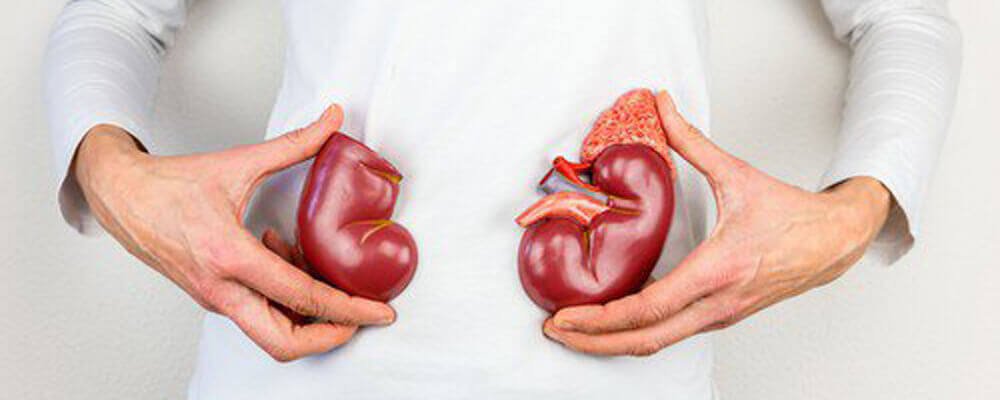Kidney cysts are fluid-filled, sac-like aggregates that can occur on the surface or inside your kidney. They can develop in the kidneys as your age advances. They are typically tiny, oval, or spherical, thin-walled sacs filled with watery fluid. Kidney cysts are nearly always asymptomatic and harmless (not cancerous). Typically, cysts do not create any concerns and in fact, people might not be aware of that throughout their life till they get a scan during a basic health check or to rule out other diseases.
Some individuals are affected by a hereditary disease called Polycystic kidney disease that causes kidney cysts in them. This condition can produce symptoms such as high blood pressure, discomfort in the back and side, blood in the urine, and repeated kidney infections. Not necessary that everyone with PKD will exhibit these symptoms though.
What is the prevalence of kidney cysts?
Kidney cysts affect up to 50% of adults over the age of 50.
What signs and symptoms does a Kidney cyst produce?
A cyst may not cause any symptoms in its early stages. If it gets to a big size or becomes infected, you may develop the following symptoms:
- Pain on the side of your abdomen between your ribcage and your hip.
- Pain in your stomach or back.
- Fever.
- Increased urge to pass urine or increased frequency of urination.
- Urine with blood or pee that is dark.
- The increasing size of the cyst.
- Reduced kidney function.
If your cyst isn't bothering you, you probably don't require treatment. Your doctor will just monitor you to ensure that it does not create more complications.
Nevertheless, you may require further therapy if the cyst produces any or a few of the above symptoms mentioned.
What causes kidney cysts?
It is unknown what causes kidney cysts, but researchers believe they arise when the tubules in the kidneys that collect urine become obstructed, fill up with fluid, and swell. Another possibility is the creation of pouches known as diverticula in weaker sections of the tubules, which are subsequently filled with fluid.
What are the risk factors for kidney cysts?
Men are more likely than women to get simple kidney cysts, and simple kidney cysts grow more prevalent as you age. As you become older, your chances of developing more cysts in one or both kidneys increase.
Is it possible to avoid kidney cysts?
There is no unique strategy to avoid the formation of kidney cysts. But, there are several steps you may do to reduce your risk like drinking lots of water and limiting your salt intake throughout the day. Remember, it's not just the salt you add to your favourite foods that matter, but also the salt in your ketchup, pickles, papad, chips, cheese, salted biscuits, and other preserved food.

Is it possible that my cyst is cancerous?
The Bosniak classification score, named after eminent radiologist Morton Bosniak, ranks the probability of a kidney cyst becoming malignant.
The following are the rankings:
- Bosniak 1: Cancer risk is less than 1%. There is no need for any surgical intervention.
- Bosniak 2: Cancer risk is less than 5%. There is no need for any surgical intervention.
- Bosniak 2F: It has a 5% cancer risk. A follow-up visit is necessary to assess the condition.
- Bosniak 3: It has a 50% chance of developing cancer. Surgery is necessary to either test or remove the cyst.
- Bosniak 4: Cancer risk is from 80% to 95%. The cyst must be removed surgically.
Your doctor will classify your cyst and discuss the next measures based on the results of an ultrasound.
What happens if a cyst has to be removed?
Almost often, a Bosniak 3 or 4 cyst should be surgically removed. With cysts less than 4cm, most surgeons advocate partial surgery, which eliminates the cyst while preserving as much of the surrounding kidney as feasible. This can help to stabilise kidney function, lowering your chance of developing other linked problems such as heart disease in the future.
If your cysts are not malignant but are extremely uncomfortable, your doctor may still remove the cyst using minimally invasive surgery.
How often should I see the doctor for a check-up?
For Bosniak 2 or 2F cysts, most urologists recommend waiting 6 to 12 months between ultrasounds.
How are kidney cysts identified?

Imaging tests like ultrasound, CT scan, or MRI as needed are often used to establish whether a kidney mass is a cyst or a tumor. Doctors may also advise you to get renal function testing. These are some examples:
What if I have more than one cyst?
Numerous cysts might be the result of a hereditary illness, such as polycystic kidney disease, which kills healthy kidney tissue.
Your urologist will examine your family history to determine the cause.
If you are diagnosed with a hereditary kidney problem, you may develop renal failure. This decrease in function may need dialysis or a kidney transplant. Your urologist/nephrologist, on the other hand, will work closely with you to manage your symptoms and avoid these problems. The doctor may advise you to take pain or blood pressure medication, as well as undergo a cyst-draining operation.
Dr. Amit Goel is a Consultant Laparoscopic/ Robotic Urologist & Renal Transplant Surgeon. He has over 15 years of experience in successfully treating complex urological diseases. His expertise includes diagnosing & treating Kidney stones, prostate enlargement, prostate cancer, kidney cancer, bladder cancer & incontinence, male infertility & erectile dysfunction.
